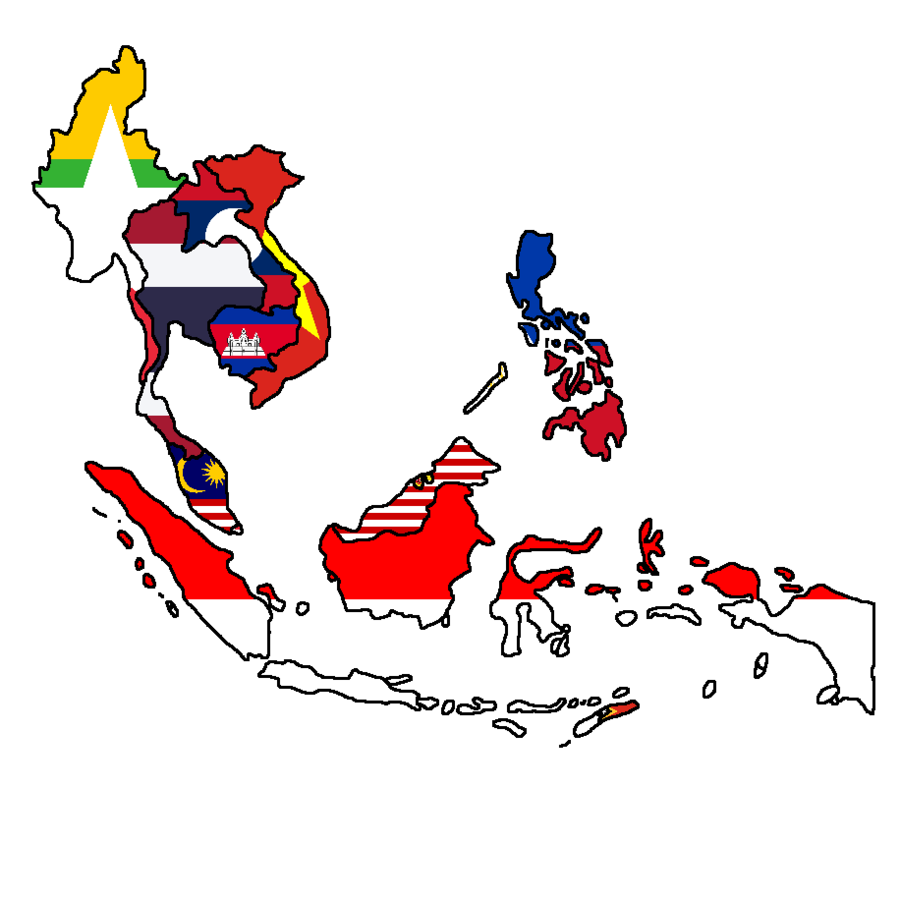by PAVLE NEDIĆ
Southeast Asia is at the front of the US-China rivalry due to its geographical location and the importance both great powers ascribe to this space. The regional states have been for a long time needing to handle both the interests of Washington and Beijing, constantly faced with the fact that, ultimately, it is not their own behavior and policies that present biggest risks for the escalation of tensions. Nevertheless, they have found a successful model for inter-regional relations that has contributed to a relative stability of Southeast Asia. It is primarily based on the reliance on Association of Southeast Asian Nations (ASEAN) as a framework in which regional issues and potentials for cooperation are channeled and hedging between external powers.
ASEAN has an important role in maintaining regional order. The understanding of regional order is based on the ideas of Michael Leifer, whose writings were in turn greatly influenced by the concepts of the English School, who sees it as system of relationships between states in a region that is based on a set of common rules, procedures and assumptions (Leifer 1986; 2005). For the regional order to be preserved, it is crucial that a balance of power exists, in regards to the possibilities that a powerful SEA country such as Indonesia takes a more dominant position and in relations with the external global powers such as the US and China. Thus, balance of power is a conscious political effort by the regional actors, mainly achieved through the application of the hedging strategy (Nedić 2022) and reliance on ASEAN and its basic values as key instruments. Having all these complex relations in mind, formulating SEA states’ response to the three Chinese global initiatives that contributes to regional order presents an important challenge.
Firstly, Global Security Initiative prompted an overly skeptical reaction by the Southeast Asian countries. The initiative itself contains largely positive undertones towards the region. The focus is put on the common, comprehensive, cooperative, and sustainable security where security of one country cannot come at the expense of others. After listing key global priorities, the security in ASEAN region is positioned as the first regional priority. Nevertheless, the regional countries harbor major doubts towards the larger role of China as a security provider. The geographical proximity of a major great power that is becoming more assertive in its foreign policy has put all SEA counties on alert. Some of the states have significant Chinese minorities, some of them have historical reasons to be wary of a larger Chinese presence in the region and some of them have direct disputes with Beijing over territorial waters in South China Sea. All of this contributes to a reservation towards GSI. This stance is reflected not only among national leaders, but among the population as well. State of SEA report for 2023 shows that around 45% of population at the ASEAN level show little or no confidence that GSI can have a positive impact (Seah et al. 2023).
On the other hand, Global Development Initiative has produced an opposite reaction. The initiative is perceived as a continuation of the Belt and Road Initiative which was an important drive for investments and development in Southeast Asia. The GDI, with its focus on large infrastructural projects, is very welcomed in the region and presents an important foundation for major projects in most regional countries for the future. In the first batch of GDI projects, 14 out of 50 (28%) were implemented in this region. This makes Southeast Asia a region with the largest number of projects in this phase.
In order to understand these contrasting reactions to GSI and GDI fully, the US factor must also be taken into account. In the security domain, the US presence in the region is largely seen as a positive counterpoint to China’s rising assertiveness. The regional countries rely on steady and consistent US interest in the region, which relates mainly to the free and open sea trade lanes, to provide a check on China. In that sense, Biden administration’s focus on the Indo-Pacific and the return to a more multilateral strengthening of cooperation with the ASEAN counties is for them a positive sign of change in comparison to Trump’s approach that was less consistent and relied on bilateral relationships. On the other hand, the US has not provided a reliable alternative to Chinese largescale economic investments. Washington’s withdrawal from Trans-Pacific Partnership and the vagueness of the Indo-Pacific Economic Framework cannot compete with Chinese projects within the BRI and GDI.
Finally, Global Civilization Initiative, as the most recent and the least precisely formulated, produced a mixed response. It insists on multiple paths to prosperity and the need to acknowledge that different civilizations and cultures have different understandings of the concepts such as democracy or freedom. The international system should accommodate these contrasting visions and resist attempts to offer a singular vision offered by one side. This stands in contrast to the Biden administration’s insistence on the binary clash between democracies and autocracies and the US’s clear definition of key values and principles accompanied by ways the rules-based international order should function. The approach advocated by China is attractive to the regional counties as it is compatible with the core ASEAN values, including the need for tolerance of diverse political systems and cultures while focusing on areas where cooperation is possible. Still, this rhetoric is not being taken at face value, as it also can be used as a justification for actions that are in contrast to the interests of the regional actors, for whom the adherence to international law is of primary interest due to their individual capacities compared to China. Furthermore, the more direct backing could be interpreted as a show of support for one side over the other in the Washington-Beijing rivalry. Thus, the reaction of ASEAN states has been a tacit and reserved support with the focus on aspects that are congruent with their basic values.
The multifaceted approach of the SEA countries towards three Chinese global initiatives showcases their attempts to accommodate relations with both great powers interested in the region with their own interests, of which the preservation of regional order based on ASEAN values is one of the most crucial ones. However, as the rivalry between Beijing and Washington intensifies it is expected these attempts will become more challenging as the maneuvering space will likely shrink.
References
Leifer, Michael. 1986. “The Balance of Power and Regional Order.” In The Balance of Power in East Asia, edited by Michael Leifer, 143–154. London: Palgrave Macmillan.
Leifer, Michael. 2005. “ASEAN’s Search for Regional Order.” In Michael Leifer: Selected Works on Southeast Asia, edited by Chin Kin Wah and Leo Suryadinata, 98–110. Singapore: Institute of Southeast Asian Studies.
Nedić, Pavle. 2022. “Hedging Strategy as a Response to the United States-China Rivalry: The Case of Southeast Asia.” The Review of International Affairs 73 (1185): 91–112, https://doi.org/10.18485/iipe_ria.2022.73.1185.5.
Seah, Sharon et al. 2023. The State of Southeast Asia: 2023 Survey Report. Singapore: ISEAS-Yusof Ishak Institute.
You can also read: “Southeast Asia between the US’ and China’s Visions for the World”, by Pavle Nedić (in New Chinese Initiatives for a Changing Global Security, Belgrade: Institute of International Politics and Economics, 111-124)
Pavle Nedić is a Research Associate at the Institute of International Politics and Economics, Belgrade. As a part of the IIPE’s Centre for Eurasian Studies he writes about and follows politics and relations in the Southeast Asia. Pavle is also a PhD student of International and European Studies at the Faculty of Political Science, University of Belgrade. The main areas of his academic interest are international relations theories, primarily realism, international security and great power relations.
Photo credit: DJ Mapping, Wikimedia Commons







